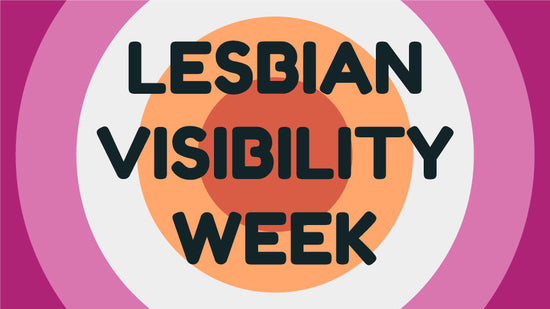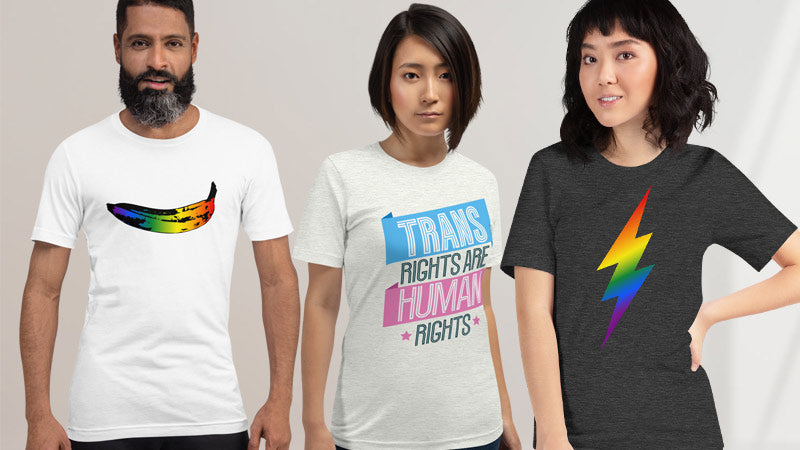The Story Of The Lavender Menace: The Protest For Lesbian Inclusion

In 1969 at a meeting of the National Organization for Women (NOW), NOW leader Betty Friedan, the author of the feminist classic "The Feminine Mystique," made a serious misjudgement. It was a mistake that would have huge repercussions for the organisation. And it was one that would help to catapult lesbian inclusion to extraordinary new heights.
The meeting was held to discuss the upcoming NOW conference, but it quickly turned contentious. Friedan had, for some time, been attempting to distance the NOW organisation from lesbian causes, claiming that including “man-hating” lesbians, as she described them, as part of NOW would create problems for the women's organisation and hinder their progress. Her most aggressive decision had been to remove the lesbian activist group The Daughters of Bilitis from the list of sponsors of the First Congress To Unite Women in 1969.
As the meeting turned to discussing contributions from some of the lesbian activists Friedan denounced them as a "lavender menace" that threatened to undermine the feminist movement.
The activists in attendance, including Rita Mae Brown and Barbara Love, were incensed. Brown had already resigned from her admin job at the NOW organisation after the Daughters Of Bilitis exclusion. Now she was determined to make an even bigger stand. And so, inspired by Friedan's attack, she and a group of radical lesbian feminists decided to form a group to fight for the inclusion of lesbians in the feminist movement. They adopted the term "Lavender Menace" as a tongue-in-cheek reference to Friedan's comments, reclaiming the term as a badge of honour rather than a slur.
And so was born the informal Lavender Menace group, which included several prominent lesbians, Karla Jay, Martha Shelley, Rita Mae Brown, Lois Hart, Barbara Love, Ellen Shumsky, Artemis March, Cynthia Funk, Linda Rhodes, Arlene Kushner, Ellen Broidy, and Michela Griffo. Many of these women were also members of the Gay Liberation Front, an organisation born out of the momentum following the Stonewall Riots in 1969.
The group’s primary goal was to challenge the exclusion of lesbians from mainstream feminist organisations, such as NOW. It may have only been a relatively short-lived group, but its impact on the feminist movement was huge. They argued that far from lesbians being a threat to the feminist movement, they were in fact an integral part of it, as gay women faced many of the same issues as heterosexual women, such as discrimination in the workplace and reproductive rights.
Lavender Menace was also committed to challenging societal attitudes towards homosexuality more broadly. They believed that the stigma surrounding homosexuality was a major barrier to achieving gender equality, and that feminists needed to be vocal in their support of gay rights in order to create a more inclusive movement.
If they needed further motivation to act they got it in March 1970 when an article was published in the New York Times magazine by heterosexual feminist Susan Brownmiller. The article alluded to Lavender Menace being a reference to the phrase “Red Menace” that was used as a way to describe the Russian threat during the Cold War. On top of that she suggested that the lesbian group wasn’t a danger and was in fact just a distraction, a "lavender herring".
Brown, and many other lesbian feminists viewed this as “a scathing put down,” and dismissed lesbians as insignificant. It put a fire under them, and as Karla Jay later said: "one thing that you were not going to tell Rita was to shut up.”
So Brown started to work on ways to respond to both Friedan and Brownmiller’s attacks. And it was decided that the best way to do this, and to gain much needed awareness, would be to do something at the Second Congress To Unite Women in New York on May 1st 1970.
CHECK OUT OUR LESBIAN TEES view the full lesbian collection
The Lavender Menace Action
The action was going to use humour and non-violent confrontation tactics and as the conference got under way Lavender Menace activists distributed flyers.
But the main action was to take place during the opening session. Lavender Menace activists had been given signs with slogans on such as “Women’s Liberation IS a Lesbian Plot”. They were also all wearing t-shirts dyed lavender with the word Lavender menace screen printed on the front.


Activists were positioned throughout the auditorium. As the first speaker started to speak, two members of the group killed the auditorium lights and switched off the microphone. In the darkness, activists ran down both aisles. When the lights came back up the activists all over the auditorium stood up and shouted "Lavender Menace!" and threw lavender-scented stink bombs onto the stage.
Karla Jay later described what happened: “When Michela [Griffo] and Jesse [Falstein] flipped the lights back on, both aisles were lined with seventeen lesbians wearing their Lavender Menace T-shirts and holding the placards we had made.
Some invited the audience to join them. I stood up and yelled, "Yes, yes, sisters! I'm tired of being in the closet because of the women's movement." Much to the horror of the audience, I unbuttoned the long-sleeved red blouse I was wearing and ripped it off. Underneath, I was wearing a Lavender Menace T-shirt. There were hoots of laughter as I joined the others in the aisles. Then Rita yelled to members of the audience, "Who wants to join us?"
Then Rita also pulled off her Lavender Menace T-shirt. Again, there were gasps, but underneath she had on another one. More laughter. The audience was on our side.
Some women left and the convention organisers attempted to restore the original session but it was too late for that. The delegates were engaged with the lesbian and they spoke for two hours, inviting delegates to ask questions about lesbianism. And many straight women thanked them for helping them to confront their feeling about lesbians.
Black and working class women felt particularly engaged as they also had been feeling excluded from the women's movement. The rest of the conference sessions were abandoned and instead became a series of workshops on lesbianism.
The Legacy Of Lavender Menace
While some feminists criticised the group’s direct action tactics for disrupting the conference and stealing the spotlight, many were supportive.
The Lavender Menace action successfully brought attention to the issue of lesbian exclusion in the feminist movement and helped to galvanise support for the group’s cause.
It gave lesbians much greater power within the women's liberation movement, and opened up feminist organisations to lesbian participation. After the action, many feminist groups began to explicitly include lesbians in their mission statements.
For the 1971 NOW conference lesbian rights were included, with the NOW statement accepting the “oppression of lesbians as a legitimate concern of feminism,”. And lesbian equality later became one of the core issues of the movement.
It wasn't until 1977 however that Friedman finally apologised for her comments and actively supported a resolution against discrimination of same sex relationships.
Lavender Menace also had a broader impact on the gay rights movement. Their advocacy helped to break down stereotypes about lesbians and gay men, and their insistence on the intersectionality of feminism and gay rights helped to forge connections between the two movements.
Find out More About Lavender Menace
If you want to read more about Lavender Menace you can buy these books. But please buy from an established queer bookshop, and not from Amazon. Always buy from queer businesses:
Rubyfruit Jungle by Rita Mae Brown
Tales of the Lavender Menace by Karla Jay
Or you can watch this documentary :











